S EA at















As the sun sets and the moon takes its place, seafarers on the night shift embark on a job task that is both physically and mentally demanding. Studies show that stepping into the realm of nocturnal work changes routine, social dynamics, and sleep patterns, which can have various health implications and an increased risk of accidents.
In shipping, as in other industries, the night shift is a necessary part of work life since vessels operate through the night. However, working at night, especially on a regular basis, can have several effects on the health of seafarers.
“Our bodies are naturally programmed to be awake and active during daylight hours and to rest and sleep during the
By Troels Leth, SEA HEALTH & WELFAREnight. Unfortunately, seafarers tasked with working night shifts for prolonged periods of time can suffer from a variety of health issues, and the risk of accidents increases,” says Anna Bergmark who is a consultant with SEA HEALTH & WELFARE.
In 2020 The Danish National research Centre for the Working Environment
completed a review of existing scientific studies. A meta-analysis of eight studies shows that the risk of accidents increases with the number of consecutive night shifts. On the 4th night shift, the risk was 35% higher compared to the first night shift. Working at night may also increase the risk of certain types of cancer.
“It's important to note that the severity of
these effects can vary among individuals, and some people may adapt better to night shift work than others. Nevertheless, if you're regularly working at night, it's crucial to take measures to mitigate these potential health risks. Consulting with a healthcare professional can also provide personalized guidance and support,” says Anna Bergmark.
The meta-analysis mentioned earlier shows that the risk of accidents was higher for 10-hour shifts compared to 8-hour shifts.
The risk of accidents also increases if there are less than 11 hours between two shifts, rising by a further 5% for every hour less between shifts.
Based on the review, The Danish National research Centre for the Working Environment assessed that night work may lead to a reduced risk of accidents and long-term health problems when organized according to the following recommendations:
• At most three consecutive night shifts.
• At least 11 hours between two shifts.
• A maximum of 9 hours per shift.
“For the sake of the general health and well-being on board, the shipping companies and the ship’s management must follow the recommendations as much as possible. However, we recognize that organizing a shift schedule that fully complies with them is only possible on a few vessels. We also recommend that the safety committees on board regularly address this issue,” says Anna Bergmark.
Read more about working at night and rest hours on shw.dk/fatigue-og-hviletid
It is unnatural for humans to be awake at night; it goes against the body’s natural circadian rhythms (Your body´s inner clock). For example, working more than three consecutive night shifts can disrupt your sleep patterns and have various health implications. Here are some ways working at night can affect your health.
Working during the night can cause fatigue due to the disruption of your natural sleep patterns. This fatigue can lead to decreased alertness, impaired concentration, and reduced cognitive function, which may increase the risk of accidents and errors at work.
Working at night often requires staying awake when your body is primed for sleep. This can lead to difficulties falling asleep or staying asleep during the day. Thus, the quality and duration of your sleep may be compromised, leading to sleep deprivation.
Increased risk of sleep disorders
Consistently working at night can increase the risk of developing sleep disorders such as insomnia, shift work sleep disorder, or circadian rhythm disorders. These conditions can disrupt your sleep-wake cycle and negatively impact your overall well-being.
Metabolic and digestive issues:
The disruption of the circadian rhythm caused by night shifts can affect metabolic processes and lead to an increased risk of metabolic disorders like obesity, diabetes, and metabolic syndrome. Additionally, night workers may experience digestive problems due to irregular mealtimes and disrupted eating patterns.
Increased risk of chronic conditions:
Several studies have linked night shift work to an increased risk of chronic health conditions such as cardiovascular disease, gastrointestinal disorders, certain cancers (breast, colorectal), and mental health issues like depression and anxiety.
Social and psychological effects: Working at night can also impact your social life and relationships. It may limit your ability to participate in daytime activities with friends and family, leading to feelings of isolation and a sense of being out of sync with society.
On pages 6-7 you can read how 3rd Officer Krys Tabinas handles his night shifts.
25-year-old Krys Tabinas, a 3rd officer aboard MAERSK MAJESTIC has his own strategy to navigate safely and attentively through a night watch: good companionship, a healthy lifestyle, and the ability to stay in sync with his body.
By Kirstine Thye Skovhøj, journalist“My number one enemy on a watch is sleepiness. The environment is dark, and it is a challenge to keep myself awake,” says Krys Tabinas. He is from the Philippines and has been working for MAERSK for a year. The crew at MAERSK MAJESTIC constitute 29 crew members and is a 399-meter-long container ship.
Even though Krys is used to working during the dark nights on board or in port, he still finds it challenging. But he learned how to deal with that part of his work life.
“During a watch, I really like to communicate. By keeping the conversation going, I’m making sure that my watch buddy is not asleep and that I don’t get sleepy myself. We talk about work-related stuff, like what we are doing right now. But we also talk about politics, how our home countries are doing, and about random stuff,” Krys says and elaborates:
“We often talk about the stars when there is a clear sky. We are out there on the big dark sea, and talking about the stars and what they mean – and appreciating nature
they have to support each other in navigating the big ship safely through the dark sea and also support each other when it´s tough to stay awake.
“I must keep a look out for traffic and my watch buddy helps me watch for small ships. I receive calls and deal with incoming and outgoing messages. I have to be on top of security and alarms at all times and walk up and down – I easily walk 10,000 steps on a night watch at a port stay. On top of that, the weather can be very hot and humid, and you get dehydrated.”
– gives perspective on life. Sometimes we give each other advice and listen to each other’s concerns.”
To Krys it´s important to have a good working relationship to the person he is doing a night watch with. This is because
Krys Tabinas typically works 8-12 in the morning and again 1-3 in the afternoon doing maintenance. His resting period is 3-8 pm. His night watch starts at 8 pm and ends at midnight. On Sundays, he works a few hours less. At port stays he is on cargo watch from 6 am to 12 noon, resting from 12 to 6 pm, then cargo watch from 6 pm until midnight.
It all demands a sharp mind and a strong and healthy body.
“To do a good job you need mental capacity, because you are juggling a lot at the same time when you are working at sea – whether it is night or day. If you have any personal problems, they will add to that. That is why it is so important that we are open-minded towards each other and allow each other to vent our feelings. A night shift can be a good place to share; there is space and time for it, and it keeps you awake to talk about interesting and important things. If the person you open up to is empathetic, it will help you. It is very important that we take good care of our mental capacity.”
My number one enemy on a watch is sleepiness. The environment is dark, and it is a challenge to keep myself awake.
To him, it is also very important to stay healthy and be in sync with his body, to listen to it and and to take the messages and signs it is sending seriously. The crew works hard during the approximately six months they are onboard.
Krys typically works from 8-12 am and again from 1-3 pm doing maintenance. From 3-8 pm it is resting time.
His night watch starts at 8 pm and ends at midnight. That’s how his work plan looks every day for six months. On Sundays, he works a few hours less. At port stays he is on cargo watch from 6 am to 12 noon, resting from 12 to 6 pm, then cargo watch from 6 pm until midnight.
Between his work hours, he fits in sleep, relaxation, exercise, and social activities with his colleagues.
“After I finish my maintenance job in the afternoon, I get a quick nap. But only if my body wants to; otherwise, I go to the gym and work out a little bit or spend time watching a movie. I always listen to my body. Some days I feel very tired,” he says and continues:
“I often just eat a light dinner because then my body can find peace to have a short nap after dinner. One hour of sleep before night watch helps me through. If I can’t sleep, I rest, but without sleep it is very difficult. Then I almost feel like I am literally falling asleep. My body gets slow, I get dizzy, and it is difficult to think straight.”
When he first joined the the maritime sector eller industry, he found it very difficult to adjust to working at night.
“It was a very rough phase. My body didn´t know how to work properly, and in the beginning, it would take me nearly three weeks to adapt. After my night shifts, I got sick because I couldn’t sleep and give my body peace. I felt nauseous and I couldn’t really think. It’s the same feeling as being jetlagged,” he explains and continues:
”As long as I’m mentally healthy and calm, it helps me to do a good job. If I feel very tired, I just get in doubt about everything. Am I doing a good job or not? It is so important to hear words of affirmation from your colleagues. If anyone onboard is
and more time to refuel. I follow a diet plan which means I focus on eating protein, vegetables, and fruit. I use taking a shower as a refresher before a night watch or to calm down after a night watch. A little sugar rush now and then is okay during the night, but I also bring food I like from home like a tin of tuna, and I drink tea during the night. Never coffee as it makes it difficult to go to sleep after night watch.”
To Krys, it is also very important to keep his mind and soul healthy. This means he stays in contact with family and friends at home and prioritizes spending time with his colleagues, even though it sometimes means less time to rest or sleep.
“We must never forget that we have a life outside all the tasks on board. We need to be social, play games and watch films together, talk to each other, support each other, and create bonds with our colleagues. Because those bonds help every single one of us through the rough times and the dark nights.”
feeling depressed or sad then they need somebody to talk to. We have to help each other to cope because that gives the strength to continue.”
During his years as a seafarer, Krys found the right formula for working at night. He always follows a set routine and plans time for relaxation and exercise.

“It’s also important to have a transition routine for when we switch from port stays to sailing. It is always important to not to get too drained,” he says.
Krys finds port stays very different from being at sea. While in port, his watches take a lot of climbing ladders and hard physical work on deck.
“I try to adapt my routines to where I am. At port stays, my body needs more food
• Eat healthily and exercise – have a set routine. Your body is your friend, and you need to treat it well.
• Talk to your night watch buddy. Talk about the tasks you are doing and have deeper conversations when there is time. It will strengthen your team spirit.
• Look up! Look at the stars and appreciate your surroundings. It will make you feel grateful.
• Eat healthy snacks – maybe something you like from home. Avoid junk food like cup noodles and keep away from coffee.
• Listen to your body. Sit down, take a little break, breathe. Drink plenty of water so you don´t get dehydrated.
Source: Krys Tabinas
There are various strategies the shipping companies and the ship’s management can implement to aid the seafarers who work the night shifts. By implementing these strategies, it is possible to reduce the health implications associated with working at night and create a healthier work environment.
By Troels Leth, SEA HEALTH & WELFAREWorking the night shift is necessary on most vessels, and seafarers accept it as an integral part of working at sea. It is possible for the employers and employees to reduce the health implications associated with night shifts by implementing various strategies:
Implementing shift schedules that allow for adequate rest and recovery between
shifts can be beneficial. Providing longer breaks between night shifts or implementing shorter shifts can help minimize fatigue and improve sleep quality.
Encouraging regular breaks during night shifts and rotating workers between day and night shifts can help reduce the strain on individuals' circadian rhythm. This approach can give employees more
opportunities to rest and adjust their sleep patterns.
Maintaining bright and well-lit work environments during night shifts can help promote alertness and reduce the impact of darkness on the circadian rhythm. Exposure to bright light during work hours and minimizing exposure to bright light during rest periods can also be helpful.
Providing comfortable rest areas or designated spaces where employees can take short naps during breaks can help combat fatigue and improve alertness.
Employers can provide resources and educational programs on healthy sleep practices, nutrition, and stress management techniques. This can help employees make informed lifestyle choices and manage the health implications of night shifts.
Regular health check-ups and assessments can help identify any early signs of health issues related to night shift work. This allows for timely intervention and appropriate support.
Offering counseling services or support groups specifically tailored to night shift workers can help address any mental health challenges they may face, such as feelings of isolation or disrupted social lives.
According to the Danish Maritime Authority, seafarers must have at least 10 hours of rest in any 24-hour period. The rest period can be divided into a maximum of two periods, one of which must be at least 6 hours. There must be a maximum of 14 hours between rest periods.
The seafarer's total weekly rest time must be at least 77 hours. This includes all rest periods. A week is a continuous 7-day period.
The ship’s master may require a seafarer to work when, for example, it is necessary for the ship's safety. If the seafarer is required to perform essential work during a scheduled rest period, the seafarer is subsequently entitled to an adequate rest period as soon as possible. Please note that rest time of less than 1 hour does not count as rest time.
The Danish rules are based on the international regulations under the Standards of Training, Certification, and Watchkeeping for Seafarers STCW, which are also found in the Maritime Labor Convention (MLC) of 2006. Therefore, these regulations cover all seafarers in the global merchant fleet.
Source: The Danish Maritime Authority and SEA HEALTH & WELFARE.
Working the night shift is a task that requires adaptability, resilience, and self-care. It challenges one's circadian rhythm, alters social dynamics, and impacts overall health. However, by embracing the unique aspects of nocturnal work and implementing strategies to mitigate its challenges, night shift workers can find a sense of balance.
Working the night shift for the first time can be a uniquely challenging experience, filled with a mixture of anticipation and uncertainty.
One of the immediate adjustments one must make is to their sleep schedule. The body's natural circadian rhythm, synchronized with daylight, must now be recalibrated to align with the darkness.
“As the colleagues on board turn in,
By Troels Leth, SEA HEALTH & WELFAREnight shift workers are awake, fighting the body's natural inclination to rest. The night shift also presents an altered social landscape. While others engage in daytime activities, night workers are often left in a life on board that is quieter, and less vibrant,” says Anna Bergmark, consultant at SEA HEALTH & WELFARE.
The challenges of working at night extend beyond the internal realm. The body's internal systems respond differently to
the darkness, affecting appetite, digestion, and overall metabolism. Night shift workers may find themselves contending with irregular eating patterns, struggling to find a balance between nourishment and the demands of their work.
“To navigate the experiences of working the night shift, it becomes crucial to establish a sense of balance and self-care. Prioritizing sleep, maintaining a healthy diet, and engaging in regular exercise are
essential practices to sustain physical and mental well-being. Creating a routine that incorporates relaxation and wind-down activities before bed can help facilitate quality sleep during the day,” says Anna Bergmark.
While the night shift presents its fair share of trials, there are also unique moments of tranquility and solitude that can be cherished. The night unveils a different side of the vessel and the ocean, with a calmness and stillness that can
be captivating. Night shift workers may also find solace in the camaraderie built amongst colleagues who share the same unconventional working hours, forming a support system that understands the challenges faced.
Everyone's response to night shift work is different, so it's essential to find which strategies that work best for you. If you have regular night shifts, there are several steps you can take to mitigate the health implications and promote your well-being. Here are some strategies for employees working at night:
Try to maintain a regular sleep routine by going to bed and waking up at the same time each day. This helps regulate your body's internal clock and improves the quality of your sleep.
as avoiding caffeine and heavy meals close to bedtime, limiting exposure to electronic devices before sleep, and engaging in relaxing activities before bed, such as reading or taking a warm bath.
Maintain a balanced diet and stay hydrated. Choose healthy meals and snacks that provide sustained energy throughout your shift. Avoid relying on sugary or caffeinated foods and drinks for quick boosts, as they can disrupt your sleep later.
Engage in regular physical activity to boost your overall well-being and combat fatigue. Incorporate exercise into your daily routine, aiming for at least 150 minutes of moderate-intensity cardio activity per week. However, try to avoid exercising too close to bedtime, as it can increase your pulse and make it harder to fall asleep.
challenges. Maintaining social connections can help combat feelings of isolation and provide a support system.
Discuss your concerns and needs with your employer or supervisor. Explore if there are any accommodations or adjustments that can be made to improve your working conditions or shift scheduling.
Make your cabin conducive to sleep by ensuring it's as dark, quiet, and cool, as possible. Consider using blackout curtains or an eye mask to block out sunlight, earplugs, or white noise machines to reduce noise disturbances, and a comfortable mattress and bedding.
Practice good sleep hygiene habits such
High-stress levels can worsen the impact of night shifts on your health. Employ stress management techniques such as deep breathing exercises, meditation, or engaging in hobbies and activities you enjoy. Find healthy ways to unwind and relax before and after your shifts.
Connect with other night shift workers or friends who understand your schedule and
Schedule regular check-ups with your healthcare provider to monitor your health and address any emerging issues promptly.
Sources: National Institutes of Health: https://www. nih.gov/; Det Nationale Forskningscenter for Arbejdsmiljø: https://nfa.dk; Medscape.com; “Seafarer fatigue: a review of risk factors, consequences for seafarers’ health and safety and options for mitigation.” Int. Marit. Health 2015; 66, 2: 106–117; SEA HEALTH & WELFARE; and others.
28-year-old second officer at MUNKEBO MAERSK Karanvir Singh Nayyar prioritizes getting rest when there is an opportunity between shifts, because over the years he has learned to focus on his responsibility of getting the ship safely through the night.
By Kirstine Thye Skovhøj, journalistLate at night on MUNKEBO MAERSK, an almost 399-meter-long container ship, you can find 28-year-old Karanvir Singh Nayyar chewing intensively on a piece of gum. It is one of his secret weapons to keep himself awake during a night shift.
Chewing gum, having conversations with his watch buddy and moving around help him to get through his shift, which runs from midnight until four in the morning when the ship is at sea.
“The human body is not designed to stay up at night; we are day people, and nighttime is for rest. From when I board
The human body is not designed to stay up at night; we are day people, and nighttime is for rest. From when I board the ship, it takes me eight to nine days to adjust. It is tough on my body. Also, the constant shift of time zones affects my body and my mental state.
KARANVIR’S WORK ROUTINE WHEN AT SEA
12 noon until 4 pm: Working on the bridge
4 pm - 5.30 pm: Maintenance work
5.30 pm – 6.30 pm: Dinner
6.30 pm – 8 pm: Rest and sleep
8 pm – 11 pm: Time to socialize, stay in touch with relatives at home or rest 11.15 pm – 12: Midnight exercise
00 am – 4 am: Night watch
4 am – 11 am: Sleep
the ship, it takes me eight to nine days to adjust. It is tough on my body. Also, the constant shift of time zones affects my body and my mental state,” Karanvir says.
He gets tired and his mind gets blurry. This is why he has learned to fit in sleep when he can and avoids drinking coffee and tea to prevent the caffeine keeping him awake when he has a chance to sleep.
Karanvir from India, who has been in the shipping industry for eight years and will soon be boarding a new ship, MAERSK CAPETOWN, is typically onboard for six to seven months at a time.
“Your natural cycle gets disrupted during the months you are onboard. For example, due to my working hours I don’t have breakfast – because my night shift ends at four in the morning and then I go to sleep until 11 in the morning. Instead, I eat instant cup noodles before I go to sleep, so I don’t sleep on an empty tummy. But of course, it affects my body, and by the end of those six-to-seven months I’m onboard, my body is very tired.”
It can be hard work getting through a night watch, especially when you have been doing it for several months. But 28-year-old Karanvir Singh Nayyar has learned that by changing your mindset and taking control of your emotions, you can overcome difficulties and perform your work to the best of your abilities – even when you are tired.

During the dark nights at sea, he speaks to his watch keeper, walks along the big ship to get some exercise, and when there is time, he enjoys just being on the big dark ocean.
“When there is very heavy traffic, we are busy and occupied, and there is not much time to feel your tiredness. But when we are on the open ocean and there are no other ships, and I can enjoy the beauty of the sea. Then I can sometimes feel isolated; I love that feeling but it can also be scary, and you feel very small out there,” Karanvir explains.
When Karanvir started sailing, he found it very difficult to cope with tiredness and working at night. Because when you are constantly tired, you get mentally exhausted, and your mental strength gets affected.

“It gets very hard by the end of it. When you reach around five months on the ship, you have done it for so long your mind and body are aching, and your mind travels back to your home. It is a very difficult situation, and it is very tough on the mind,” he says.
Over the years he learned to change his perspective and not focus too much on his own feelings.
“At one point I decided to be mature about it – even when I feel like giving up. I am in charge of safety; that is my very important responsibility. I must do a good job and get us all safe and sound through the night. It is not about how I feel, it is simply about safety. Making that decision and pushing the difficult feelings aside, and stopping feeling sorry for myself, really helps me to do a good job,” he says and gives a final piece of advice:
“Get your rest when you can and stay mature, even when you feel like giving up”.
• Rest and sleep when you can.
• Take responsibility – don’t feel sorry for yourself – you can do it!
• Keep the conversation going with your watch buddy during the night.
Almost half a million people take part in 28-year-old Karanvir Singh Nayyar’s life at sea on various social media channels. During the last five years he has produced more than 150 YouTube videos from his daily life as a seafarer and some of his videos have more than three million viewings.

His mission is clear: he wants to give his followers a unique opportunity to explore the unknown world of seafarers and he wants to be a mentor to younger people thinking about or actively entering the shipping industry.
To Karanvir, who is a second officer at MUNKEBO MAERSK, it is a mystery why the globe-spanning shipping industry isn’t more recognized. After all, according to the Maritime Industry Foundation's Maritime Knowledge Centre, more than 1.2 million people are employed at sea.
“Seafarers plays a very important role in global trade. More people realized it during the pandemic, when they suddenly couldn’t get the groceries, they needed. But why are
His voice and body language are energetic. Karanvir Singh Nayyar looks directly into the camera and speaks in fast English language with an Indian accent. Looking past him the viewer gets a glimpse of the big blue sea in the background. The picture changes and takes the viewer on a quick tour of the deck of a big container ship. In the next frame a helicopter flies in. The purpose of this YouTube video is to explain to the viewers how seafarers far away from shore deal with medical emergencies.
we not recognized at all? Why don’t people know much about how things work at sea, when it plays such an important role in our society? Those questions got me into this,” Karanvir says in an enthusiastic tone on a Zoom call from India.
It was during the pandemic in 2020, when he was at home in India, that the urge arose to communicate about his life as a seafarer and take people into all the nooks and crannies of life at sea.
“During Covid I started speaking in front of the camera using my iPhone, and I documented my life at home. Then I joined EMMA MAERSK and started documenting my life onboard. I spoke with my employer first, and of course made sure that the captain and my colleagues were okay about it. They like what I’m doing because they also see that there is a need for it.”
“My colleagues feel good about me making films about work life onboard. Their parents and relatives get to watch them, and the different professions get to show their job functions. That means everyone is happy.”


Karanvir is a natural storyteller who’s filled with ideas and a drive to share his life at sea; not only with the people following him on social media, but also with his loved ones at home.
“It is important to show life at sea to my family. Following my life at sea and understanding it helps them sleep at night. They have gotten a better understanding of what I’m going through when I’m at work. They know I’m okay and they know where I am and what I’m up to. They get to see that life at sea is more than big waves and hard work, it can also be calm and great fun.”
His colleagues are also very happy about his videomaking skills and his ability to give insights about life at sea, from what you eat to how the engine works.
Karanvir Singh Nayyar use a GoPro that he can attach to himself to film life onboard. He started documenting life as a seafarer during the pandemic.
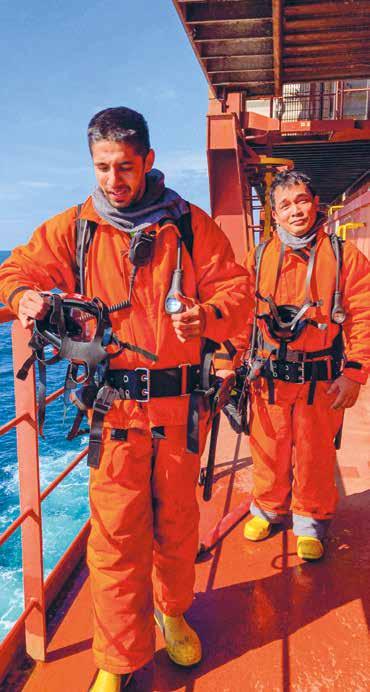
“My colleagues feel good about it. Their parents and relatives get to watch them, and the different professions get to show their job functions. That means everyone is happy.”
He didn’t have any qualifications for becoming a successful YouTuber, with people from all over the world taking part in his life at sea.
“When I got the idea, I also discovered my passion for storytelling. It quickly became my hobby and my passion.”
He took a basic course in video editing but is otherwise completely self-taught and has learned by doing.
“It didn’t take long for my hands to get used to filming and editing. I have improved my skills one video at a time. I often make videos based on frequently asked questions that I get on social media. I pick a question and try to show the answer to it.”
The Indian seafarer and video maker always has his phone on him when he moves around the ship.
“When there is something important going on, I film it. I have some guidelines from MAERSK that I follow, and I always ask permission. I use a GoPro camera that I can attach to myself.”
He edits all the video material by himself, and he often does it while he is onboard. “It’s a good thing for me to do while onboard because it puts me in a constructive zone – also when I feel homesick.”
The skilled video maker doesn’t hesitate to put himself forward when it comes to heavy topics like mental health, equality, and religion.
My colleagues feel good about it. Their parents and relatives get to watch them, and the different professions get to show their job functions. That means everyone is happy.Photo: Karanvir
“For me, it is very important to put a topic like mental health on the agenda. I made a video recently about how I got depressed and what I did to deal with it while at sea. I am very open with the audience, and they honour that openness. They give me feedback and support and recognize my effort to share my thoughts and learnings.”
He also uses the videos to share solutions to different problems such as loneliness, depression, and isolation.
“Mental well-being is the most important part of a human life and a very important topic to put on my agenda. I also share my experience with equality and working with people from different religions, because they are all important factors when it comes to creating a good and healthy work life at sea.”
When Karanvir Singh Nayyar joined the shipping industry eight years ago, he didn’t have anywhere to look for advice or inspiration, or for answers to all his questions. Today, he is himself a great inspiration to coming seafarers when he gives advice on how to do well in an interview with a shipping company, how to join the merchant navy, or what life at sea has taught him about teamwork.
“When I joined the industry, I really needed someone who could help me connect all the aspects and take me behind the scenes. There is a big gap between life at sea and life on shore. In every video I make, my approach is to inspire and show the reality as closely and realistic as possible. I want to connect with my followers and help answer their questions,” he says and elaborates: “Life at sea is very dynamic, and there is a lot to show.”
His YouTube channel and Instagram, LinkedIn and Twitter accounts have grown steadily since he started. When one of the world’s biggest ships blocked the Suez Canal in March 2021, even more people joined his audience. Karanvir made several videos about the situation, with one reaching 3.5 million viewings.


There is great variety in the 157 YouTube videos he has made so far. One episode is about how to deal with a storm. Another is about a fuel tank, and a third is about meeting a whale.
“I don’t think anybody before me has gone into depth with all the practical aspects of life at sea. My goal is to add knowledge and decrease the gap between expectations and reality.”
FACTS:
Karanvir Singh Nayyar
28 years-old, lives in India with his fiancée when he is not at sea.
Second Officer at MAERSK CAPETOWN, previously Second Officer at MUNKEBO MAERSK.

GO FOLLOW:
Youtube: @KaranvirSinghNayyar
Instagram: @Karanvir.nayyar
LinkedIn: Karanvir Singh Nayyar
Twitter: @NayyarKaranvir
FACTS:
He has 365.000 subscribers on his YouTube-channel. 60% of his YouTube followers are from India, 10% are from the US, 10% from Europe, and the rest are from Bangladesh, Pakistan and Australia. The digital storyteller is also behind a popular Instagram account with more than 100,000 followers. A Twitter-account with more than 6,500 followers and a LinkedIn profile with more than 7,700 followers.
Hi
SHWI have recently changed shipping companies and have moved to a new ship with a great crew. However, there is one thing that puzzles me. On my new ship, there are rules about what type of clothing and footwear I must wear inside the accommodation and on deck during my free time. It feels like walking around in PPE all day.
In my spare time on other companies' ships, I could wear whatever clothes and footwear I wanted to wear in my spare time on board - for example, flip-flops, shorts, and a T-shirt. So my question is: Can my shipping company require me to wear certain clothes or clothing during my free time on board?
Regards
Nikolai JacobsenHi
NikolaiUsually, you decide what to do – and what to wear – in your leisure time. However, the shipping company can set guidelines for your appearance on board, for example, in the form of a dress code, which specifies the standard of clothing you should follow. This will typically be for safety reasons.
On vessels with special conditions on board that require the crew to wear special clothing or shoes during leisure time for health or safety reasons, the shipping company must provide or pay for these as if they were protective equipment.
For example, the company may require you to wear a particular type of heeled shoe to minimize the risk of slip and fall injuries on board. It could also be that all your clothing must be 100% free of static electricity, as there is a risk that a spark could cause an explosion or fire.
So, the answer is yes. I hope your question has been answered; otherwise, don't hesitate to contact me again.
With kind regards
Ester Ørum, ConsultantWe are constantly working on developing new features and improving the user experience on our platform @SEA-@SHORE.
“To benefit from these developments, it is important to remember to upgrade @SEA regularly as this does not happen automatically,” says consultant Rolf Trap, who is responsible for the platform.
The newest version on the horizon is version 6.0.0.20 and includes, among other things:
• Our latest publications in PDF format for free viewing/download through the E-PUBLICATIONS module, including "Mental Well-being on the Agenda" and "Personal Crises at Sea," as well
It's true. The shipping company is allowed to set guidelines for your attire on board - even during your resting period. In many cases, there will be a requirement to wear heeled shoes to minimize the risk of accidents.
as the sector specific guides "Point Extraction" and "Drinking Water on Merchant Ships."
• The new user manuals for @SEA-@SHORE.
• A link to instructional videos from the "Medical Guide for Seafarers."

• Plus, a lot of bug fixes and improved user functionality.
The latest version can be downloaded here: atshore.shw.dk/atsea-install
Did you know that almost 600 Danish-flagged vessels use the @SEA-@SHORE platform regularly?
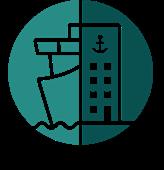
In the spring of 2023, SEA HEALTH & WELFARE published a new version of the Drinking Water Guide. One of the new additions to the guidelines is that it is now permitted to use chemicals other than chlorine to disinfect drinking water on board.
"From a health and safety perspective, this is positive because chlorine is a dangerous chemical to work with. Also, disinfection with chlorine doesn't always work well enough, so we've often had to do more. However, it is a requirement that the chemical used is approved by the Danish Veterinary and Food Administration, says consultant Ester Ørum from SEA HEALTH & WELFARE.
Another significant change in the Drinking Water Guidelines is that shipping companies must now measure for relevant heavy metals (including lead, cadmium, and chromium) when a new ship is delivered or change to Danish
flag. On the other hand, there is no longer a requirement for pipes and taps to be VA-approved.
In addition, the EU Drinking Water Directive has been revised and there are new, stricter limit values that must be complied with.
The Executive Order on food and drinking water etc., in merchant ships was revised in December 2019. In this connection, the Drinking Water Guide from SEA HEALTH & WELFARE was written into the text of the Executive Order to meet the requirements.
The new version of the Drinking Water Guide, that replaces the old version, has been sent to all Danish ships and shipping companies. In addition, a digital version is available on our online platform @SEA@SHORE. You can also buy physical copies of the guidelines in Danish and English on our Webshop.
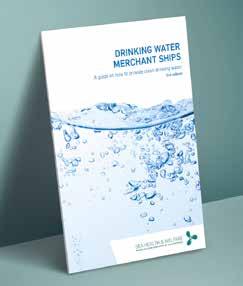


The guide contains dialogue tools that can help you identify a colleague’s mental health challenges and advice on how to become an active listener.
The purpose of this guide is to provide easyto-use advice on how to help a colleague who is in crises. It addresses the shipboard management, but it can also be used by the individual seafarer.


This publication is aimed at the ship´s management who want to concrete tools to uncover the crew's mental well-being, and in an equal way to initiate a constructive conversation about a crew member's mental well-being.

www.shw.dk/webshop

If you are interested in non-fiction about, e.g., maritime law and regulations, ship management, the field of autonomous shipping, or how to create a good workplace culture you can find a variety of e-books in the online library in Libby. Here is a short presentation of some of the titles available.
Just Work: How to Root Out Bias, Prejudice, and Bullying to Build a Kick-Ass Culture of inclusivity
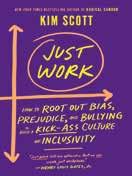
2021, by Kim Scott
How can we recognize, attack, and eliminate workplace injustice – and transform our careers and organizations in the process? This book offers a practical framework for both respecting everyone's individuality and collaborating effectively. This is the essential guide leaders, and their employees need to create more just workplaces and establish new norms of collaboration and respect.
2021, by William Baker, Michael O'Malley and Mark Smeby
Without presenting a naive idea of kindness, this eye-opening book identifies the surprising attributes successful and resoundingly kind leaders share – revealing how traits like sincerity, honesty, and respect can benefit organizations and help them to thrive. Through the book business professionals will learn how to apply these lessons in their own workplace, and, e.g., establish a supportive environment, and spur continuous organizational growth.

2023, by Arnold Marsden
You repeat it often. You've plastered it all over the office and at the worksites. But do you really mean it? This book is intended to be your mirror. How do people in your organization describe your safety leadership? This book describes twelve traits, people are looking for from a credible safety leader, using stories based on real experiences in dozens of companies around the world.

Since Turn the Ship Around! was published in 2013, hundreds of thousands of readers have been inspired by former US Navy captain David Marquet’s true story. Facing the high-stress environment of a sub where there’s little margin for error, he was determined to reverse the trends he found on the SANTA FE: poor morale, poor performance, and the worst retention rate in the fleet. Marquet flipped the leadership model on its head and pushed for leadership at every level.

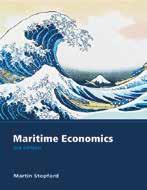
2008 3rd edition, by Martin Stopford
The book uses historical and theoretical analysis as the framework for a practical explanation of how shipping works today. Among other issues it includes lessons from 5000 years of commercial shipping history, shipping costs; accounts; ship finance. Chapters on the geography of sea trade; trade theory and specialized cargoes and chapters on the merchant fleet shipbuilding, recycling, and the regulatory regime.
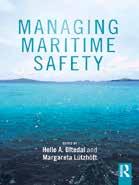
2018, by Helle A. Oltedal og Margareta Lützhöft
This book gives you a thorough understanding of contemporary maritime safety and its management. It provides varying viewpoints on traditional safety topics in conjunction with critical discussions of the international safety management code and its application. The book also offers new perspectives on maritime safety such as ship and equipment design for safety and the relevance of safety management systems, etc.
2020, by Baris Soyer and Andrew Tettenborn
This book covers all the major topics associated with ship operations and
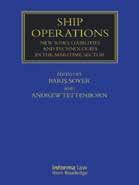
provides a guide to recent legal and practical developments. Part I offers a detailed and critical analysis of issues of contemporary importance concerning new liability regimes and developments. Part II discusses how parties, in particular ship operators, attempt in contemporary practice to allocate their risks concerning ship operations. Part III evaluates the legal position of those involved in more 'back office' operations.
2020 5th edition, by Yvonne Baatz
This authoritative guide covers all the core aspects of maritime law in one distinct volume. The writing team of leading academics and practitioners provide clear and concise coverage of topics ranging from bills of lading to arrest of ships.

YOU CAN ALSO BORROW:
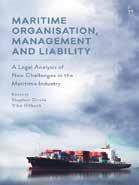
2021, by Stephen Girvin and Vibe Ulfbeck
This book identifies and examines the legal challenges facing the shipping industry and ship management today. One section concerns digitalization and automation, including delivery based on digital release codes, bills of lading based on blockchain technology, the use of web portals and data sharing, and aspects of the law relating to autonomous ships, notably in marine insurance and carriage of goods.
Arctic Governance, volume 1-3, published by Bloomsbury The IMLI Manual on International Maritime Law, volume 1-3, published by Oxford University Press
MORE INSPIRATION:
You can read more about the titles below and see which other books we have about the subjects on the library’s website www.sbib.dk – here you can also find information on how to get a library card for the electronic library to be able to borrow the books.
If you are missing a certain book, contact the librarian at sbib@sbib.dk and she will see if the book is available for purchase.